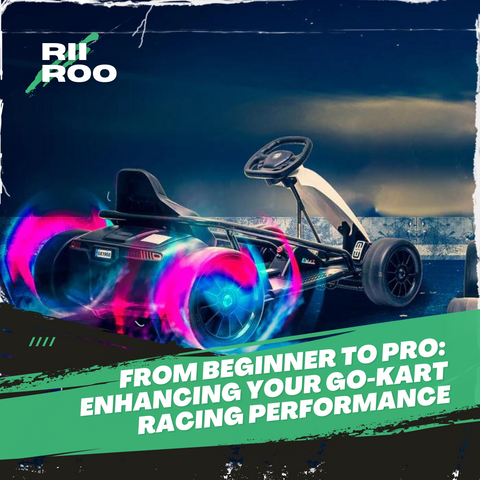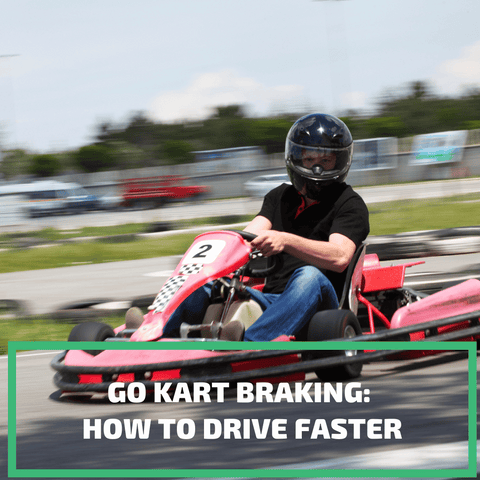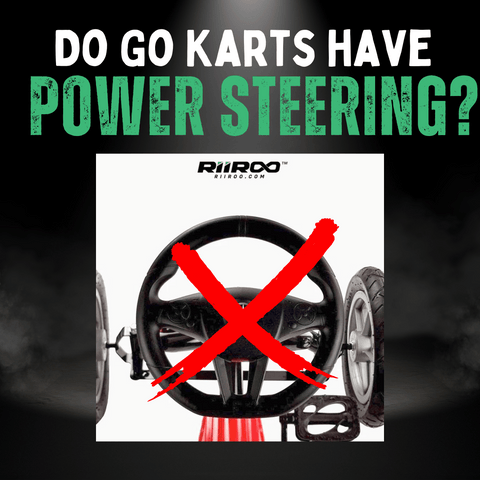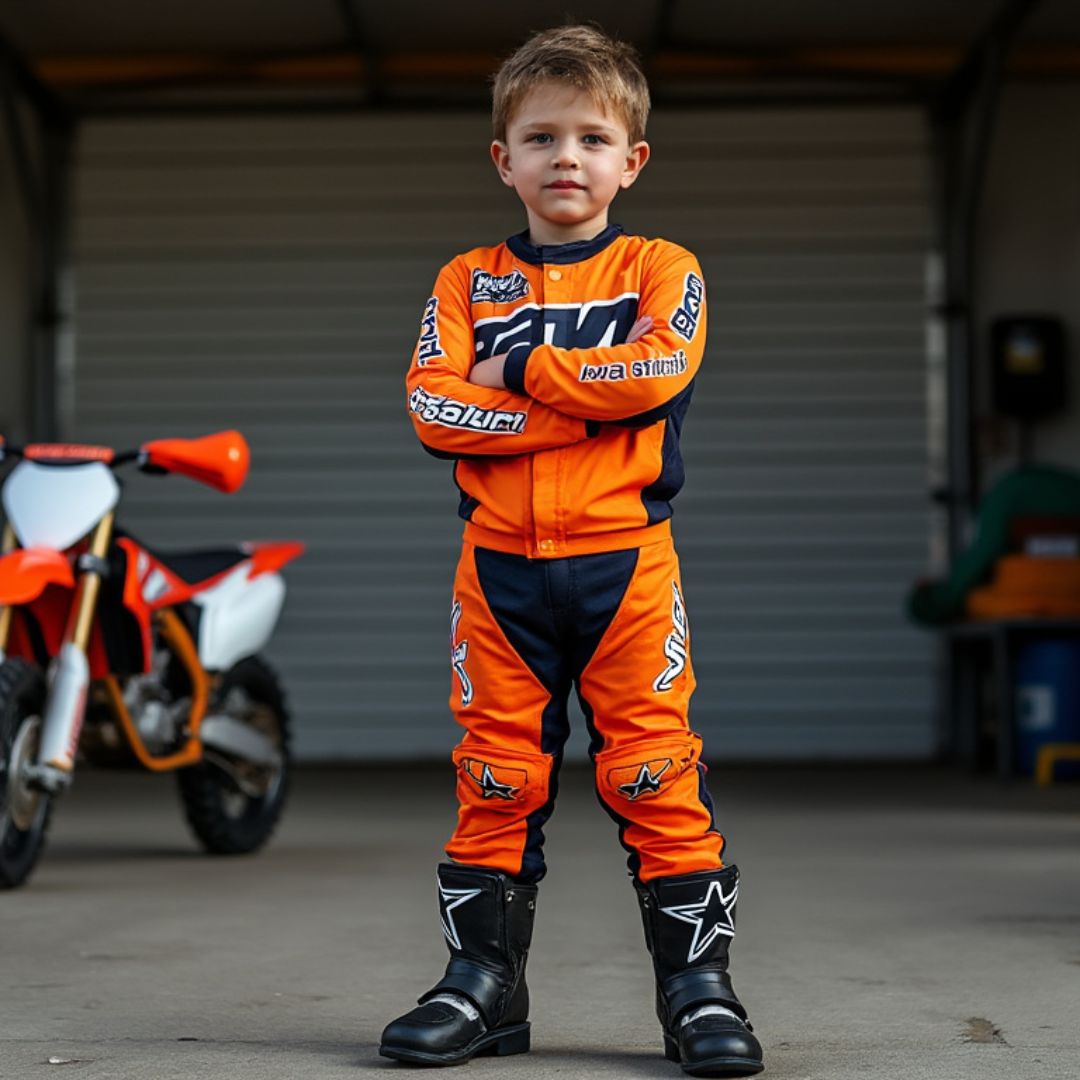Published: 16.6.23
Updated: 9.7.24
Have you ever felt the rush of speeding around a go-kart track, only to be overtaken by a more experienced driver? 
It's a common experience for many go-kart enthusiasts. The thrill of the race, the roar of the engine, the wind in your face—it's all exhilarating until you realise you're not quite up to speed with the competition.
But what if there was a way to level up your go-karting skills?
Imagine learning the secrets of the pros, mastering techniques that help you navigate tricky turns, maintain your speed, and maybe even take the lead.
Picture yourself confidently maneuvering your kart, overtaking competitors, and crossing the finish line with a personal best time.
Sounds exciting, doesn't it? You're in the right place. This article will guide you through the process of improving your go-karting skills. We'll provide practical tips and strategies that you can start using right away. Buckle up and let's get started!
| Drill Type | Specific Drills | Description |
|---|---|---|
| Physical Conditioning Drills | Stamina and Endurance |
|
| Core Strength |
|
|
| Neck Strength |
|
|
| Upper Body Strength |
|
|
| Driving Technique Drills | Cornering Techniques |
|
| Braking and Acceleration |
|
|
| Steering and Control |
|
|
| Race Strategy Drills | Overtaking Techniques |
|
| Defensive Driving |
|
|
| Situational Awareness |
|
|
| Mental Conditioning Drills | Reaction Time |
|
| Focus and Concentration |
|
Understanding the Basics of Go Karting
Importance of Body Position
First things first, let's delve deeper into the importance of body position in go-karting.
It's a common misconception that leaning into the apex of a turn can help you navigate it more effectively. However, this isn't the case.
When you lean, you shift the weight distribution of the kart, which can lead to instability and even cause the kart to spin out.
Keeping your body centred in the kart is crucial. This ensures that the weight is evenly distributed, allowing the kart to maintain balance and stability.
It's the kart's job to navigate the turns, and your job to steer it correctly.
Moreover, a centred body position allows for better control of the steering wheel and pedals.
It enables you to react quickly to changes on the track, whether it's an unexpected turn or an opportunity to overtake a competitor.
So, remember, keep your body centred, your eyes on the track, and let the kart do the work.
Related: Does Body Weight Matter in Go-Karts?
The One Pedal Rule
Next, let's expand on the one-pedal rule. In the heat of a race, it might seem intuitive to have one foot on the accelerator and the other on the brake, ready to switch between them instantly.
However, this can lead to a loss of control and even damage the kart's mechanics.
Using one pedal at a time ensures smoother transitions between accelerating and braking.
When you lift off the accelerator and press the brake, you allow the kart to slow down naturally before the brakes are applied.
This reduces the risk of skidding or spinning out, especially in high-speed situations or sharp turns.
Additionally, using one pedal at a time allows you to better feel the kart's responses and adjust your driving accordingly.
It's all about understanding the rhythm of go-karting - knowing when to speed up, when to slow down, and when to coast.
Mastering the one-pedal rule is a fundamental step towards becoming a proficient go-kart racer.
Related: How Fast Do Electric Go Karts Go?
Advanced Go Karting Techniques
The Art of Looking Ahead
When you're in a go-kart, your perspective of the track is quite different from that of a regular car.
You're closer to the ground, and everything seems to move at a much faster pace.
This is why the art of looking ahead is so crucial in go-karting.
Looking ahead doesn't just mean keeping your eyes on the road. It means anticipating what's coming next.
Whether it's a sharp turn, a steep incline, or another racer ahead of you, being able to foresee these elements gives you the time to plan your approach and make necessary adjustments in advance.
For instance, if you see a tight turn coming up, you can start slowing down and position your kart for the turn.
If there's a slower racer ahead, you can plan your overtaking manoeuvre.
By looking ahead and anticipating, you're not just reacting to the track, you're proactively navigating it, which can significantly improve your racing performance.
If you are looking to take your go-karting to the next level, it's also super important to look after and maintain your go kart.
Studying the Track and Racing Lines
Understanding the track is a fundamental aspect of go-karting.
Each track has its unique layout, with different turns, straights, and obstacles.
Studying the track allows you to learn the best racing lines - the optimal path to take on the track to complete a lap in the shortest time possible.
Watching faster, more experienced drivers can provide valuable insights into finding the best racing lines.
Notice where they position their karts on straights and turns, where they accelerate, and where they brake.
Try to replicate these lines in your own driving.
Remember, the best racing line isn't always the shortest path. It's the path that allows you to maintain the highest average speed throughout the lap.
So, study the track, learn the lines, and practice them until they become second nature.
If you're interested in the science behind this, you can read more about it in this article.
Related: What is the Fastest Go Kart in the World?
Steering Wheel Control
In go-karting, the steering wheel is your primary tool for controlling the kart.
Smoothness on the steering wheel is key to maintaining traction, avoiding slides, and ultimately, keeping control of your kart.
Abrupt movements on the steering wheel can cause the kart to lose grip, especially at high speeds or during turns.
This can lead to slides or spins, slowing you down and potentially causing accidents.
Instead, aim for smooth, controlled movements. Turn the wheel gently into turns, and straighten it out gradually as you exit.
Try to avoid jerking the wheel or making sudden adjustments.
Remember, the steering wheel isn't just for turning. It's a tool for communicating with your kart, telling it where to go and how fast to get there.
Mastering steering wheel control is a crucial step towards becoming a proficient go-kart racer.
Recent Developments and Advancements in Go-Karting Technology and Techniques in 2024
1. Electric Go-Karts
The go-kart industry is experiencing a notable shift towards electric propulsion, offering several advantages over traditional gasoline-powered karts:
- Lower Noise Levels: Electric motors are significantly quieter, reducing noise pollution and making karting more accessible in noise-sensitive areas.
- Reduced Emissions: Electric go-karts produce zero emissions, contributing to a cleaner environment.
- Lower Maintenance Costs: Fewer moving parts in electric motors mean less frequent maintenance and lower overall costs.
- Improved Performance and Acceleration: Electric karts can offer instant torque and better acceleration compared to their gasoline counterparts.
- Economical: Both providers and customers benefit from the lower operational costs and longer lifespan of electric karts.
2. Advanced Materials
Manufacturers are increasingly using advanced materials to enhance go-kart performance:
- Lightweight Construction: Modern materials like carbon fiber and high-strength composites reduce kart weight, improving handling and speed.
- Durability: These materials offer better durability, reducing wear and tear and extending the life of the kart.
3. Communication Systems
Advancements in communication systems have revolutionised go-karting:
- Real-Time Data Collection: Modern karts are equipped with sensors that collect and transmit data on performance metrics such as speed, lap times, and engine diagnostics.
- Driver Monitoring: Real-time monitoring allows for instant feedback and adjustments, enhancing safety and performance.
- Enhanced User Experience: Data-driven insights help drivers improve their skills by analysing performance metrics.
4. SPEED+ Technology
360Karting has introduced SPEED+ technology, offering significant improvements:
- Banked Turns: Organically-shaped banked turns with optimised inclination improve handling and speed.
- Track Design: Mathematically developed track designs consider lateral and vertical forces for a smoother and faster ride.
- Driver Experience: These innovations cater to both novice and experienced drivers, providing a more thrilling and enjoyable experience.
5. Advanced Cornering Techniques
Mastering cornering techniques is crucial for competitive karting:
- Optimising Racing Lines: Maintaining the best racing lines ensures maximum speed and minimum travel distance.
- Braking Points: Properly identifying braking points before entering turns is essential for maintaining control.
- Apex Navigation: Hitting the apex at the right moment allows for smooth and fast cornering.
- Controlled Acceleration: Accelerating out of corners in a controlled manner ensures better lap times.
6. Weight Distribution and Balance
Improving weight distribution and balance is key to enhancing kart performance:
- Seat Position: Adjusting the seat position optimises weight distribution, improving stability and control.
- Advanced Braking Methods: Techniques like trail braking help maintain traction and improve lap consistency.
- Throttle Control: Skillful throttle control helps maintain consistent lap times and better handling.
7. Race Strategy and Tactical Intelligence
Developing strategic skills is becoming increasingly important:
- Drafting: Using drafting techniques to gain speed advantages.
- Defensive Driving: Employing defensive driving techniques to maintain position and avoid overtaking.
- Pit Stop Strategies: Effective pit stop strategies are crucial for endurance races.
- Track Reading: Reading track conditions and anticipating changes can provide a competitive edge.
8. Improved Safety Features
Advancements in safety technology are ongoing, ensuring a safer racing environment:
- Protective Gear: Improved helmets, racing suits, and gloves enhance driver safety.
- Track Barriers: Advanced track barriers reduce the risk of injury during collisions.
These developments demonstrate the go-karting industry's commitment to integrating advanced technology, improving environmental sustainability, and enhancing safety and performance for drivers of all skill levels.
Related: Do Go Karts Have Power Steering?
Strategies for Winning
Winning in go-karting isn't just about speed; it's about strategy and smart driving.
Here are key strategies to help you outsmart your competition and take the lead:
Holding the Racing Line
Maintaining the optimal racing line is crucial for minimising distance and maximising speed. Staying on this line ensures you navigate the track efficiently, reducing lap times and enhancing control.
Overtaking Techniques
Overtaking is a critical skill in go-karting. Look for opportunities where other drivers make mistakes or take wide turns. Plan your move, ensuring you have enough space and speed to overtake safely without causing a collision.
Defensive Driving
Protect your position by using defensive driving techniques. When another driver attempts to overtake, position your kart to block their path while staying within the rules. This forces them to take a less optimal route, giving you the advantage.
Drafting
Drafting involves following closely behind another kart to reduce air resistance and increase your speed. Use this technique on straight sections to gain an advantage, then time your move to overtake as you exit the draft.
Track Awareness
Stay aware of track conditions and changes. Monitor how the track evolves during the race, noting areas with more grip or potential hazards. This awareness allows you to adjust your driving style accordingly.
Consistent Lap Times
Aim for consistency in your lap times rather than pushing for a single fastest lap. Consistent performance helps maintain your position and reduces the risk of mistakes.
Pit Stop Strategy
In endurance races, effective pit stop strategies can make a significant difference. Plan your stops to refuel and maintain your kart without losing too much time. Coordinate with your team to ensure quick and efficient stops.
Staying Relaxed
Racing can be intense, but staying relaxed is key to maintaining control and making smart decisions. Keep a firm but not tight grip on the steering wheel, and stay loose to react quickly to changes on the track.
By incorporating these strategies into your racing approach, you'll be better equipped to handle the challenges of the track and emerge victorious. Remember, smart driving and strategic thinking are just as important as speed in go-karting.
For more tips on high-performance go-karting for kids, check out this guide.
The Importance of Staying Relaxed
Racing can be a tense experience. The adrenaline, the speed, the competition - it's easy to get caught up in the moment and tense up. However, tension can actually slow you down.
It can make your movements jerky and your reactions slower.
Instead, try to stay relaxed. Keep your grip on the steering wheel firm but not tight, and your body loose but not lax.
This will allow you to make smoother movements, react more quickly to changes on the track, and maintain better control over your kart.
Remember, go-karting is supposed to be fun. So, take a deep breath, relax, and enjoy the ride.
You might find that you perform better when you're relaxed and focused, rather than tense and anxious.
Learning from Faster Drivers
No matter how experienced you are, there's always something to learn in go-karting.
One of the best ways to improve is to learn from those who are faster than you.
Watch how they navigate the track, how they handle turns, and where they accelerate and brake.
Try to follow their racing lines as closely as possible. You might find that they take a different line through a turn, or brake later than you usually do.
Don't be afraid to ask for advice or feedback. Most go-kart racers are happy to share their knowledge and experiences.
Remember, every driver has their own style and techniques. By learning from others, you can find new ways to improve your own racing performance.
Related: How Fast Does A Go Kart Accelerate?
Safety Precautions
Safety should always be your top priority when go-karting. Always wear the right gear, including a helmet, gloves, and appropriate footwear.
Understand the safety features of your kart, such as the seatbelt and emergency stop.
Follow the rules of the track and respect other drivers.
Remember, no victory is worth compromising your safety or the safety of others.
Physical and Mental Preparation
Go-karting is not just about skill; it demands physical endurance and mental focus. Preparing your body and mind is crucial for optimal performance on the track.
Here’s how you can get race-ready:
Physical Fitness
Regular Exercise: Maintain a routine that includes cardiovascular workouts, strength training, and flexibility exercises. This improves your stamina, muscle strength, and overall physical condition, which are essential for handling the kart and enduring long races.
Core Strength: Focus on core exercises to enhance stability and control. A strong core helps you maintain better posture and manage the physical demands of steering and maneuvering the kart.
Hydration: Stay hydrated before, during, and after races. Dehydration can lead to fatigue and decreased concentration, affecting your performance.
Balanced Diet: Eat a balanced diet rich in proteins, carbohydrates, and healthy fats. Proper nutrition fuels your body, providing the energy needed for peak performance.
Mental Focus
Meditation and Mindfulness: Practice meditation and mindfulness techniques to improve your focus and reduce stress. Staying calm and focused helps you make better decisions during the race.
Visualisation: Visualise the track and your racing strategy before the race. Imagine yourself navigating turns, overtaking opponents, and crossing the finish line. Visualisation can enhance your confidence and mental preparedness.
Breathing Techniques: Use controlled breathing techniques to stay calm and composed. Deep, steady breaths help maintain your focus and prevent anxiety from affecting your performance.
Mental Resilience: Develop mental resilience to handle the pressures of racing. Learn to stay positive and focused even if things don’t go as planned. Mental toughness helps you recover quickly from setbacks.
Routine: Establish a pre-race routine that includes physical warm-ups, mental exercises, and strategic planning. A consistent routine can help you enter the right mindset and prepare your body for the demands of racing.
By incorporating these physical and mental preparation techniques into your routine, you'll enhance your ability to perform at your best on the track. Remember, a well-prepared mind and body are key to achieving success in go-karting.
Maintenance and Understanding Your Kart
Knowing your kart inside out can give you an edge in a race. Regularly check your kart for any issues, such as tyre wear or engine problems.
Understand the role of different parts of the kart and how they affect its performance.
For instance, knowing the difference between pedal go-karts and petrol go-karts can help you choose the right kart for your needs.
Learn how to make basic adjustments, such as tyre pressure or seat position, to suit your driving style and the conditions of the track.
Go-Kart Types and Customisation
Types of Go-Karts
-
Electric Go-Karts
- Environmentally Friendly: Zero emissions make these karts eco-friendly.
- Quieter Operation: Ideal for both indoor and outdoor tracks.
- Instant Torque: Provides quick acceleration.
- Lower Maintenance Costs: Fewer moving parts reduce the need for frequent maintenance.
- Versatile: Suitable for various track conditions.
-
Petrol Go-Karts
- Traditional Engines: Typically powered by 2-stroke or 4-stroke gas engines.
- Higher Top Speeds: Generally faster than electric karts.
- Longer Run Times: Longer operating periods between refueling.
- Powerful Performance: Ideal for outdoor racing with greater power output.
-
Rental Go-Karts
- Designed for Durability: Built to withstand frequent use with minimal maintenance.
- Lower Performance: Less powerful than racing karts but easier to handle.
- Safety Features: Often include remote engine cut-off switches for safety.
- Reliable Engines: Typically use 4-stroke engines for consistency.
- Accessible: Perfect for beginners and casual racers.
-
Racing Go-Karts
- High-Performance: Equipped with powerful engines, often 2-stroke.
- Lightweight and Agile: Designed for competitive racing with superior handling.
- Highly Customisable: Allows for extensive modifications to optimise performance.
- Skilled Operation: Requires more skill and experience to handle effectively.
Customisation for Better Performance
-
Engine Modifications
- Increase RPM: Remove the governor for higher engine revolutions per minute.
- Racing Muffler: Install a high-flow muffler for improved exhaust flow.
- Larger Carburetor Jet: Enhance fuel delivery for better engine performance.
- Performance Air Intake: Increase airflow to the engine for more power.
-
Chassis Tuning
- Weight Distribution: Adjust for better balance and stability.
- Tyre Pressure and Alignment: Fine-tune for optimal grip and handling.
- Caster and Camber Angles: Optimise to improve cornering performance.
- Seat Position: Adjust for better driver weight distribution.
-
Gearing Changes
- Sprocket Modifications: Change sizes to adjust acceleration and top speed.
- Racing Chain: Install a high-performance chain for better power transmission.
-
Brake Upgrades
- Improved Brake Pads: Install higher quality pads for better stopping power.
- Larger Brake Disc: Upgrade to a larger disc for enhanced braking efficiency.
-
Aerodynamics
- Downforce Enhancements: Add a front spoiler or rear wing to increase downforce and improve traction.
-
Suspension Tweaks
- Torsion Bars: Adjust for better handling and cornering performance.
- Axle Stiffness: Optimise to suit different track conditions.
-
Tyre Selection
- Appropriate Compounds: Choose the right tyre compounds based on track conditions for optimal performance.
When customising a go-kart, safety and adherence to regulations are paramount, especially in competitive racing.
Modifications for rental karts are usually restricted to what the track allows, while professional racing karts offer extensive customisation options.
Regular maintenance and tuning are crucial for achieving the best performance, regardless of the go-kart type.
Related: Why Does My Go-Kart Clutch Smoke?
Practice Techniques
xxxxxxxxxxxx
Set realistic goals and track your progress over time. Learn from your mistakes and don't be discouraged by setbacks.
Remember, every champion was once a beginner. Keep practising, keep learning, and most importantly, keep enjoying the ride!
In Summary
Go-karting is a thrilling sport that combines speed, skill, and strategy.
Whether you're a beginner or a seasoned racer, there's always room for improvement.
From understanding the basics like the importance of body position and the one pedal rule to mastering advanced techniques like looking ahead, studying the track, and controlling the steering wheel, every aspect plays a crucial role in your performance on the track.
We've also discussed the importance of strategic moves like holding the line and overtaking, staying relaxed during the race, and learning from faster drivers.
Additionally, we've touched on safety precautions, physical and mental preparation, understanding your kart, and effective practice techniques.
Remember, improving at go-karting is a journey, not a destination. It requires practice, patience, and a willingness to learn.
If you're interested in learning more about go-karting, check out these comprehensive guides on go-kart costs, buying a kids go-kart online, and the pros and cons of electric go-karts for kids.
So, keep these tips in mind, hit the track, and remember: every race is an opportunity to learn and improve.
Happy racing!
FAQs
What kind of clothing should I wear for go-karting?
When go-karting, it's important to wear comfortable clothing that doesn't restrict your movement. Long-sleeved shirts and trousers are recommended to protect your skin. Closed-toe shoes are a must - avoid wearing sandals or flip-flops. Depending on the go-karting facility, you may be required to wear a race suit, helmet, gloves, and neck brace, which are usually provided on-site.
How can I communicate with other drivers during a race?
Communication during a race isn't like in traditional road driving. You can't use signals or horns to communicate with other drivers. Instead, you need to be aware of your surroundings and anticipate the actions of other drivers. Overtaking, for instance, should be done carefully, ensuring you're not cutting off another driver or causing a collision.
Is there a weight or height limit for go-karting?
Most go-karting facilities have height and weight restrictions to ensure the safety of all drivers. These restrictions can vary, so it's best to check with the specific facility beforehand. Generally, drivers should be tall enough to reach the pedals and steering wheel comfortably, and the weight limit is typically set to ensure the kart can operate safely and effectively.
Get in Touch 🚀
Loved our article on “From Beginner to Pro: Enhancing Your Go-Kart Racing Performance” Got the itch to dive into more wheely-awesome info?
Whether you're a parent or a grandparent, we're here for all your kids ride-on toy questions! 🚗💨
Feeling click-happy?
Jump straight into our wonderland at RiiRoo.com.
Or, if you're more the chatty type, give our Live Chat a whirl and let's talk toys!













Share:
How Long Does A 12v Ride-on Battery Last?
Go-Karting vs. Driving a Car: Unveiling The Differences